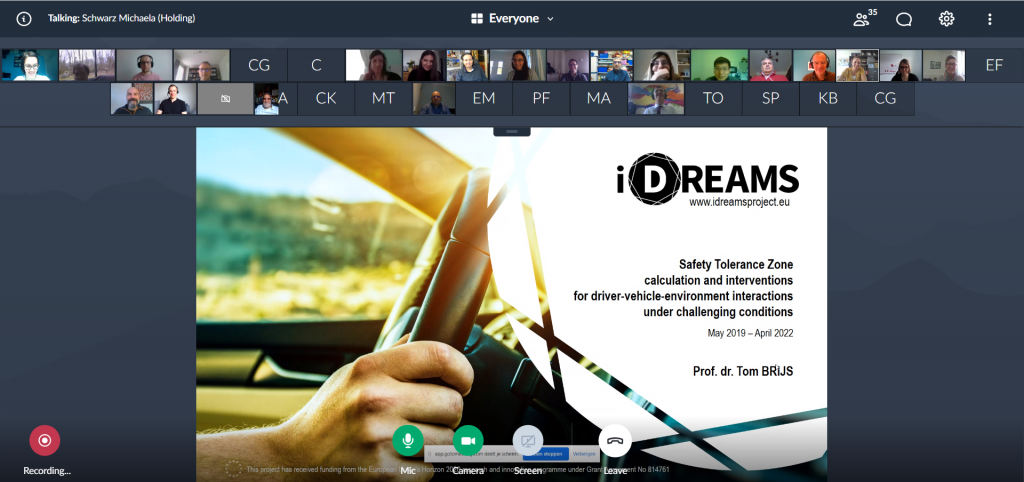The impact of the project is maximised through the User Advisory Board (UAB), which is established right at the start of the project. This UAB acts as a counselling body throughout the project’s lifetime. The UAB consists of core stakeholders comprising public authorities, companies, and key international organizations representing road users, associations, fleet operators, vehicle manufacturers and insurance companies. The role of the UAB is to support the consortium in ensuring the research continues to address the key issues as well as to provide suggestions for the implementation (valorisation) of the results.
The UAB will gather at least three times throughout the project. The first meeting was planned on March 30, 2020. Unfortunately due to COVID-19 we were forced to meet digitally instead of in person. Luckily this did not hamper a fruitful gathering. 13 UAB members (out of 22 organisations who are officially part of the UAB), representing 13 different organisations joined the consortium for an interesting day of online sessions where discussions took place and ideas were exchanged. Some important conclusions were provided regarding:
- The type of crashes that is expected to be influenced the most by the i-DREAMS system, namely side (40%) and rear-end (40%) crashes that occur vehicle-to-vehicle (65%).
- The Safety Promoting Goals that are expected to be impacted most significantly by the i-DREAMS system, namely ‘driver fitness’ (35,4%), ‘speed management’ (31,2%) and ‘sharing the road with others’ (25%).
- Potential additional safety performance factors are anxiety, stress, illnesses (e.g. diabetes, sleep apnea), driver impairment due to alcohol and drugs, use of medication and distraction by the use of in-vehicle infotainment systems.

Furthermore a couple of interesting advices were provided on:
- Crucial factors for acceptance of technology such as a precise timing of the provision of interventions, privacy of drivers and human-machine interfaces.
- Market-driven applications for monitoring of truck drivers and bus drivers and the possibility to link i-DREAMS benefits with insurance reduction programs.
- Monitoring technologies where it is pointed out that driver behaviour will be influenced even without interventions, because drivers are aware of being monitored. Also the importance of tailgating, forward collision warning and interaction with pedestrians is emphasized.